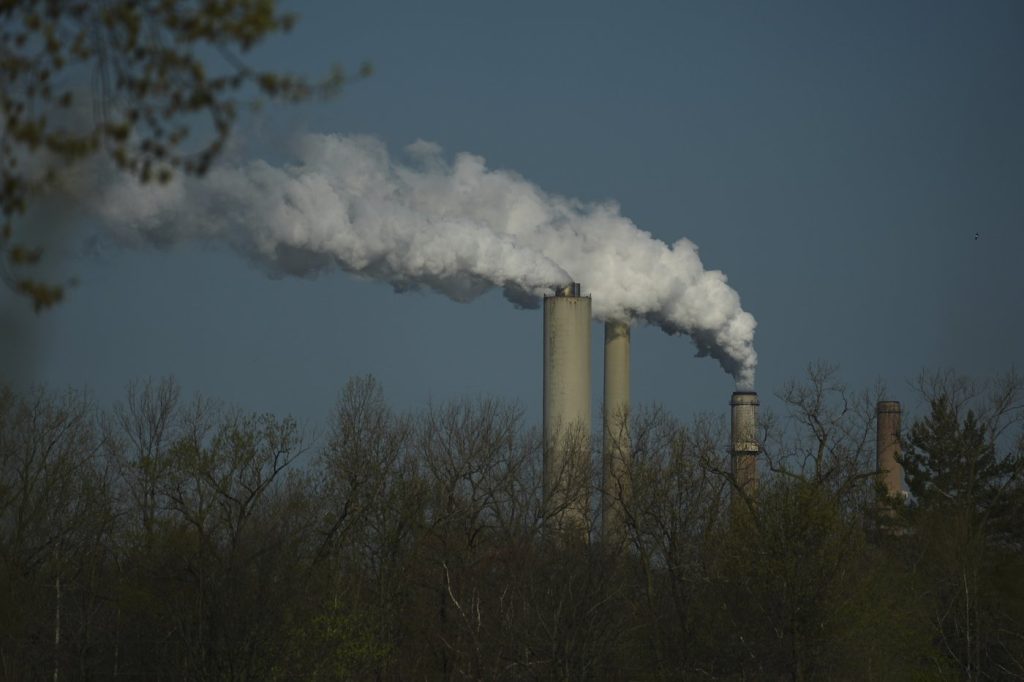In a worrying prediction set to be released soon, a study indicates that humanity is poised to emit sufficient greenhouse gases within the next three years to surpass a crucial threshold for limiting global warming. The scientists involved in this research forecast that by early 2028, carbon dioxide levels will rise to a point where there is at least a 50% probability of the world settling into a long-term warming scenario of 1.5 degrees Celsius (2.7 degrees Fahrenheit) above preindustrial levels. This accumulation of greenhouse gases primarily stems from burning fossil fuels like gasoline, oil, and coal, and represents an earlier timeline than previously estimated by the same group of 60 international scientists in 2022.
Co-author Zeke Hausfather emphasizes the urgency of the situation, stating, "Things aren’t just getting worse. They’re getting worse faster." He notes that current trends are moving society away from ambitious climate goals. The 1.5 degrees Celsius target was established in the 2015 Paris Agreement and has become a foundational benchmark for global efforts to combat climate change. Crossing this threshold is expected to trigger more severe climatic phenomena, including intensified heatwaves, droughts, stronger storms, and significant sea-level rise that poses existential threats to small island nations.
According to the report titled Indicators of Global Climate Change released on Thursday, scientists have calculated that humanity can emit only an additional 143 billion tons (130 billion metric tons) of carbon dioxide before surpassing the pivotal 1.5-degree mark. Given that the world generates around 46 billion tons (42 billion metric tons) of carbon dioxide annually, this limit is anticipated to be reached by February 2028. Current data indicates that global warming has already reached approximately 1.24 degrees Celsius (2.23 degrees Fahrenheit) since preindustrial times.
The study, published in the journal Earth System Science Data, reveals that human-induced warming has accelerated to nearly half a degree (0.27 degrees Celsius) per decade. This alarming pace is linked to a growing energy imbalance on Earth, with the amount of heat absorbed from the sun significantly outpacing what is radiated back into space. Hausfather describes this energy imbalance as the "most important measure of the amount of heat being trapped in the system," and highlights that it is currently 25% higher than a decade ago.
Lead author Piers Forster articulates the somber outlook, stating, "It’s quite a depressing picture unfortunately," noting that records are being shattered across various climate indices. He cannot envision a realistic scenario in which the world can avoid surpassing the 1.5-degree threshold. The surge in fossil fuel emissions is identified as the primary driver of this rapid warming, compounded by a reduction in particle pollution, which previously had a cooling effect that masked additional warming.
Recently, global temperatures temporarily exceeded the crucial 1.5-degree limit when they reached 1.52 degrees Celsius (2.74 degrees Fahrenheit) for an entire year in 2024. While the Paris Agreement aims to measure warming over longer periods, the Earth could reach long-term thresholds soon, given the persistent nature of carbon accumulation and its implications for the carbon cycle.
The 1.5-degree threshold holds substantial political significance, marking a point beyond which the adverse impacts of climate change are deemed unacceptable by nations worldwide. It is projected that surpassing this limit would fundamentally affect vulnerable populations and small island nations, with potential repercussions including drastic sea-level rise and increased extreme weather events. Although some scientists, like Andrew Dessler from Texas A&M University, caution that the goal was always aspirational and missing it does not equate to the end of the world, they acknowledge that even minor increases in temperature lead to increasingly severe outcomes.












